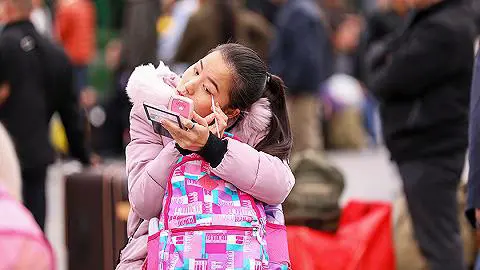INTRO
Beijingers on Wednesday saw their first sunshine in seven days, with a cold front dispersing the lingering smog in the city.
But while blue skies have returned, the capital's air pollution remains heavy on Wednesday, with PM 2.5 readings still at levels deemed "very unhealthy" by the U.S. Embassy in Beijing.
While some other Chinese cities are still smothered, by smog...
After days of choking in smog hazardous to health, Beijing residents are finally seeing an improvement.
Light snowfall early on Tuesday morning reduced the concentration of fine particulate matter in the air, gauged by PM 2.5 readings that measure air particles of less than 2.5 micrometers in diameter.
According to the U.S. Embassy in Beijing on Wednesday morning, PM 2.5 readings varied from 245 to 295...
Meaning the air quality has 'recovered' to a 'mere' "very unhealthy level," after being off the charts over the weekend - when PM2.5 readings soared above 900 per cubic meter...
A reading beyond "fatal," according to the World Health Organisation.
While Beijing's air quality monitoring station shows the highest reading for real-time PM 2.5 at 11 am Wednesday was just above 200.
The city's weather bureau has now lifted its fog alert, with most areas gaining visibility to more than 10 km -- partly helped by wind that swept the city from Tuesday evening to Wednesday.
Health experts warn the polluted air will cause increased respiratory and cardiovascular risks.
And advised residents to stay indoors.
Over the last few days, air purifiers, have been selling out.
SOUNDBITE: Beijing resident
"I came to buy the air filter machine. This is my first day going outside of my house, because the air was so bad."
SOUNDBITE: Beijing resident
"I know the PM2.5 readings are crazy high. And I never saw air this bad before. I think everyone should do something about it, like taking more public transport rather than using our private cars."
The problem wasn't limited to Beijing.
The haze also spread to regions surrounding the city and some parts of northern, eastern and central China, causing traffic risks, as drivers complained of burning eyes and low visibility...
And a surge in hospital admissions, with the Beijing Shijitan Hospital receiving 20 percent more patients over the weekend.
In the eastern Zhejiang Province, smog also prevented authorities from spotting the smoke of a factory fire - letting it rage for four hours.
Luckily, no casualties were reported.
Some experts say the cause for the brown sky is more than just a lack of wind - it is man-made.
The roots of the smog are industrial emissions, vehicle exhausts and dust from construction sites.
In the wake of the smog, more cities have joined the efforts to curb pollution.
In the city of Jinan in the eastern Shandong Province, half the cars will be put off road, according to their license plate numbers.
The new rule allows even-numbered cars to hit the road on some days and odd-numbered ones on others.
In 2011, the government announced it has met its major air and water pollution control targets for the country's 11th Five-Year Plan, from 2006 to 2010.
But prolonged smog in recent days suggests China's rapid industrialization and urbanization, are posing grave new challenges.
And counter-pollution control will need to be more vigorous from now on... for China's 1.3 billion citizens, to breathe safely.
 简体中文
简体中文

